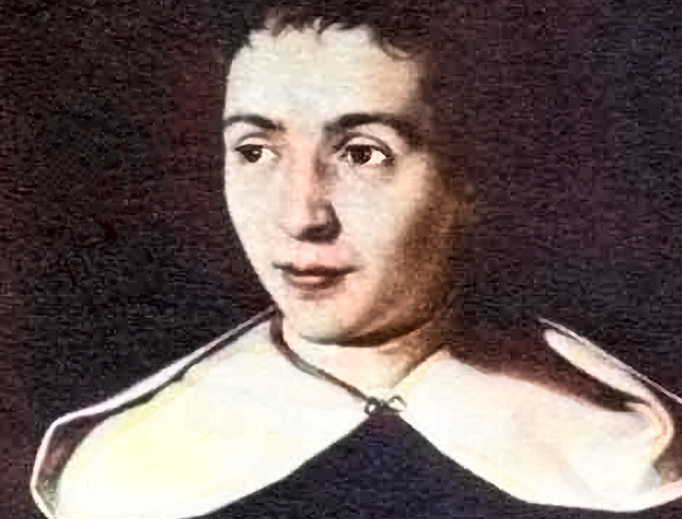Ven. Samuel Mazzuchelli, Missionary to the Early American Frontier
Father Mazzuchelli was declared venerable in 1993, when his life of heroic virtue and fame of sanctity were established.

Brother Samuel Mazzuchelli was glad to leave New York City. The 22-year-old Italian Dominican had grown up in the neighborhood around Milan’s great cathedral and had seen Europe’s most beautiful cities from Rome to Paris, but the New York of 1828, growing grand on the spoils of westward expansion and the labor of poor immigrants, had convinced him that material splendor and spiritual corruption went hand-in-hand.
When he reached Philadelphia, though, his classically-trained Italian tastes couldn’t help admiring the order of the well-planned city, and in Baltimore, the neoclassical architecture of the Cathedral of Mary Our Queen.
This was the last of any real civilization he was to see for a while. His destination, Cincinnati, where fellow Dominican and diligent missionary Bishop Edward Fenwick looked forward to his arrival, was a distant 800 miles away.
The two had met a couple of years before, during Bishop Fenwick’s recruitment tour of Rome. The American-born bishop of the diocese encompassing the old Northwest Territory needed two things — money, and (most of all) entrepreneurial, courageous priests willing to dive into that vast land without the comforts of civilization.
Among all the Dominicans then studying for the priesthood, Bishop Fenwick had found only one who was ready to take on the challenge — Samuel Mazzuchelli, the beloved youngest son of a well-positioned family of bankers, merchants and politicians. At 17 years old, he had renounced his inheritance and convinced his father let him enter the Dominicans, but whatever Bishop Fenwick said afterward that turned him into a missionary wasn’t left for posterity to know.
In May 1828, Brother Mazzuchelli paid a final visit to his family and left for France with Father Frederic Rese, missionary and vicar of the Cincinnati diocese. After three months improving his French, Brother Mazzuchelli went on alone to Cincinnati while Father Rese finished his business in Europe.
But when he reached Cincinnati that fall, the American frontier was still east of the Mississippi. After a brief stay in Cincinnati, Bishop Fenwick fist sent the seminarian south to Bardstown, Kentucky, where the Dominicans had established their first American monastery, and then back north to Somerset, Ohio. Brother Mazzuchelli found the setting of the monastery in the woods dedicated to St. Joseph a perfect place to prepare for ordination. On Sept. 5, 1830, he heard his name called out name in Cincinnati’s cathedral and he stepped up to the altar to become a priest.
One month later, Bishop Fenwick sent him 600 miles west to Mackinac Island in the strait joining Lake Michigan and Lake Huron. He caught a fur trader’s boat heading that way. He had etched on a piece of paper a basic map of the 200,000 square miles entrusted to him. He was 23 years old.
Brother Mazzuchelli spent the next five years bringing the sacraments to three generations of French-Canadian Catholics, and with the help of interpreters, preached and prepared catechetical texts from the Native American tribes. He visited the sick in far-off cabins, preached and taught the faith sometimes twice a day, and heard confessions for up to 14 hours per day.
Often lonely but never sad, he made the rounds of the settlements on Lake Michigan and beyond — from Mackinac up to Sault Saint Marie, south to Green Bay, and then west to the Winnebago tribe and still further to Prairie Du Chien. He reached the souls in that 600-mile range by boat or canoe, on horseback, on snowshoes, and over ice, snow and mud.
Sometimes he found himself so destitute he couldn’t hire an interpreter. Another time, the journey became so long and the provisions of nature so sparse, he had to eat a prairie rat. But even when in his simple house on Mackinac Island he slept on the floor to keep prepared for the rougher conditions of travel. In Green Bay, he built a church and school and baptized over 1,000 Native Americans.
With the Redemptorists installed at Green Bay and Mackinac, Bishop Rese sent Father Mazzuchelli to Dubuque, Iowa. Miners were moving into what would become the tri-state area where Iowa, Illinois and Wisconsin meet, digging out lead to manufacture paint for the growing country. Farmers soon followed, but Father Mazzuchelli was still the only priest for hundreds of miles up and down and east and west of the Mississippi.
In this mission field Father Mazzuchelli would make his most lasting contributions, founding 30 parishes and building approximately 20 churches. Civic leaders also called upon him. He led the opening prayer and gave an address at the first session of the Wisconsin territorial legislature and designed public buildings and even cities, such as Iowa City and Shullsberg. He also founded the Sinsinawa Dominicans.
After his death in 1864, the penance chain around his waist was discovered. No one knows how long he had been wearing it, but his skin had grown around it. He is buried in St. Patrick’s Church in Benton, Wisconsin.
Father Mazzuchelli was declared venerable in 1993, when his life of heroic virtue and fame of sanctity were established. His cause for canonization needs to find one verifiable miracle — an instantaneous, complete and lasting cure of a serious physical condition without medical intervention — for him to be beatified.
- Keywords:
- ven. samuel mazzuchelli













